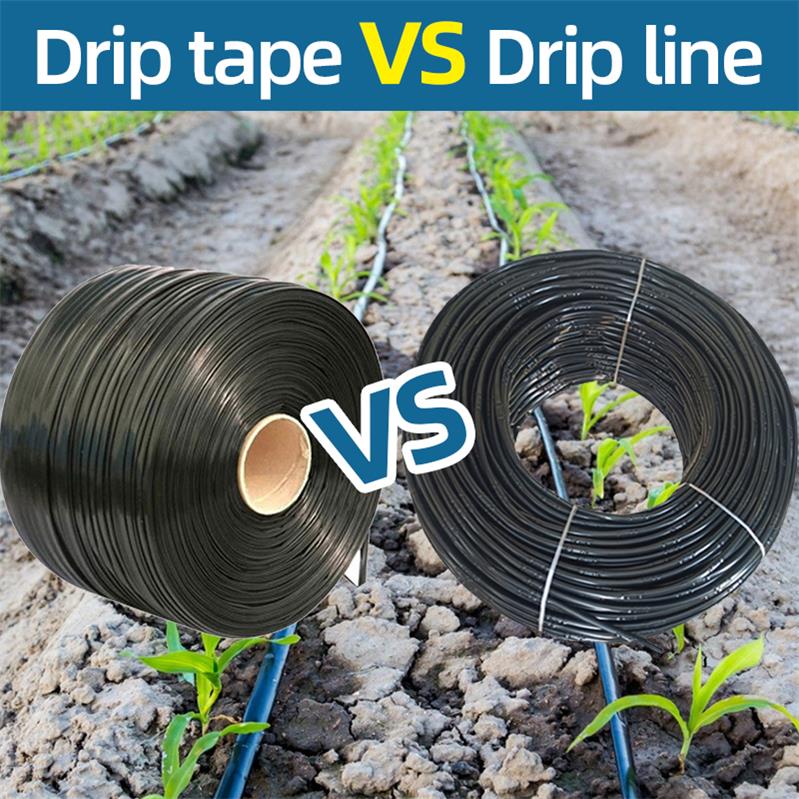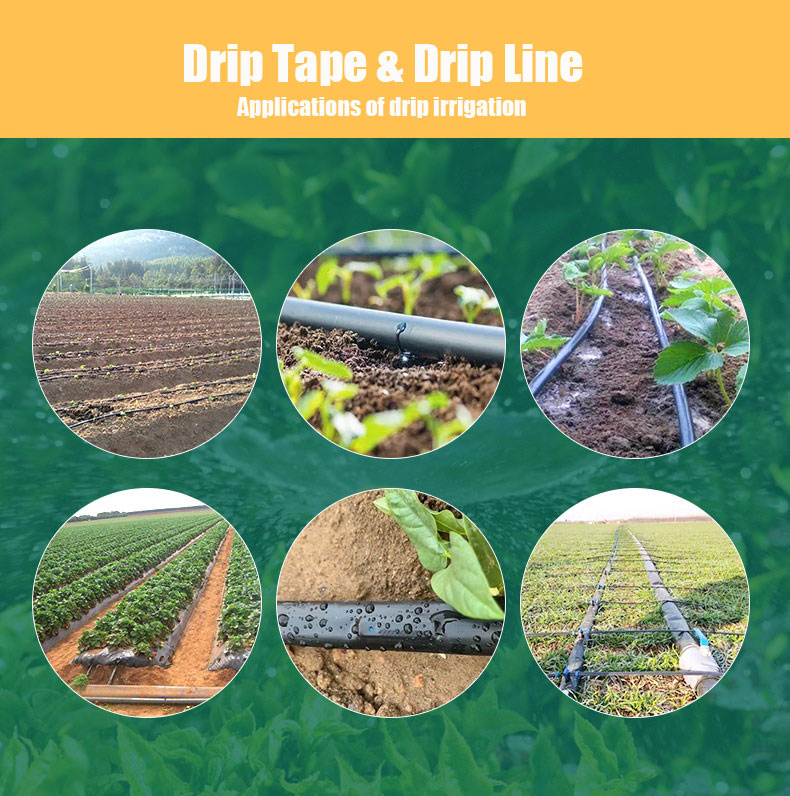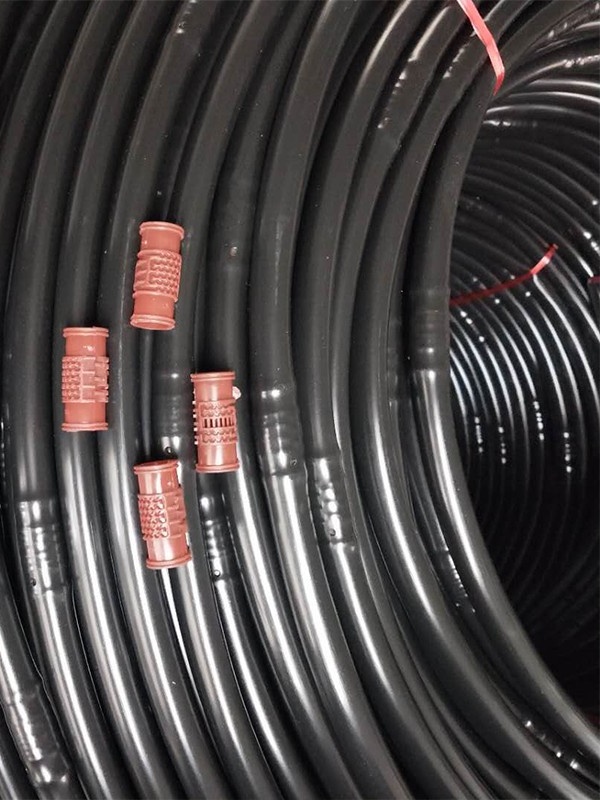Drip Tape vs Drip Line

Drip Tape vs. Drip Line: Understanding the Differences
What is Drip Tape?
Drip tape is a thin-walled, flexible tubing used primarily in agriculture for seasonal or temporary irrigation. It consists of small, pre-punched holes or slits that deliver water along its length at low pressure. Drip tape is ideal for row crops, vegetables, and large fields where cost-effective, uniform water distribution is needed for short periods.
What is Drip Line?
Drip line, on the other hand, is a more durable and thicker-walled tubing with built-in emitters spaced at regular intervals. It is designed for long-term irrigation solutions, especially in permanent crops like orchards, vineyards, and landscaping. The built-in emitters provide controlled water flow, making drip line more reliable and suitable for varying terrains and more permanent installations.
Durability and Longevity
Drip tape is typically thinner and less durable than drip line, often designed for single-season use or temporary setups. It can be prone to damage from external elements, requiring replacement after each growing season. Drip line, with its thicker walls and sturdy construction, can last several years, making it a more permanent and durable irrigation solution.
Cost Differences
One of the main advantages of drip tape is its lower cost compared to drip line. It is a cost-effective option for large-scale operations or short-term irrigation needs. Drip line, while more expensive upfront, offers greater longevity, making it a better investment for long-term installations where durability and consistent water delivery are essential.
Best Use Cases
Drip tape is best suited for annual crops or short-term growing cycles, where affordability and ease of installation are critical. Drip line is better for perennial crops, landscaping, or any situation requiring long-term irrigation with minimal maintenance.
Water Efficiency
Both drip tape and drip line are highly efficient at conserving water, but drip line provides more precise control over water flow due to the built-in emitters. Drip tape offers uniform water distribution but may be less precise in terms of water pressure and flow regulation.
How to Choose a Drip Irrigation Product for Your Farming?

Selecting the right drip irrigation product depends on several factors specific to your farming needs. Here are key considerations to help you make the right choice:
1. Crop Type and Duration
- Annual crops like vegetables and row crops: Drip tape is usually the best option. It’s affordable and designed for short-term use, making it perfect for seasonal crops that require temporary irrigation solutions.
- Perennial crops such as trees, vines, and shrubs: Drip line is better suited due to its durability and long lifespan. The built-in emitters in drip line provide consistent watering over several years, making it ideal for permanent installations.
2. Budget and Cost Considerations
- If you’re working with a limited budget and need to cover a large area for short-term crops, drip tape is a cost-effective solution. It offers efficient water distribution at a lower price point, though it may need replacement after each growing season.
- For long-term investment in irrigation, drip line is more expensive upfront but more economical in the long run due to its longevity and reduced maintenance costs.
3. Soil Type and Water Requirements
- Sandy soils: These soils drain quickly, so consider using drip line with closer emitter spacing to ensure plants receive enough water.
- Clay soils: These retain water longer, meaning you can space emitters further apart, making both drip tape and drip line viable options, depending on crop duration.
- If water conservation is a priority, drip line with regulated emitters can offer better control over water flow and pressure, improving overall efficiency.
4. Field Size and Layout
- For large fields with evenly spaced plants, drip tape is often more practical as it can cover a wide area at a lower cost. It’s easy to install and ideal for long, straight rows of crops.
- In irregularly shaped fields or more permanent installations, drip line is more adaptable. Its thicker walls and built-in emitters handle changes in pressure and terrain better, ensuring consistent water distribution.
Get Best Price Now

Request A Quotation!
Please Feel free to give your inquiry in the form below. We will reply you in 24 hours.
We are the manufacturer of drip irrigation equipment, welcome to cooperate and become our agent! We will provide ideal price.